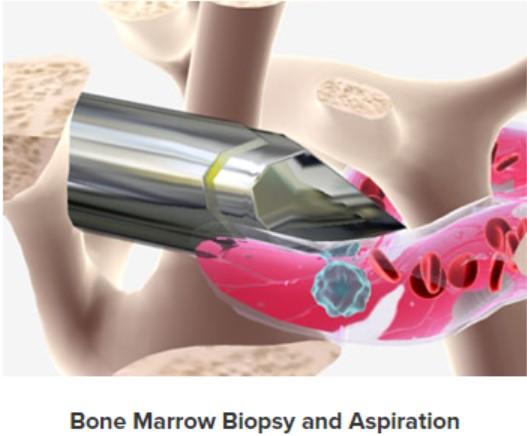Your doctor uses a bone marrow test to examine the fluid and tissue in your marrow. The tests help determine whether cancer or another disease is affecting blood cells or marrow, as well as the extent of the disease. Some changes to blood cells can be detected in marrow samples before they can be seen in blood samples.
Bone marrow testing usually involves two steps: a bone marrow aspiration and a bone marrow biopsy. A bone marrow aspiration is used to remove a liquid marrow sample. A bone marrow biopsy is used to remove a small amount of bone filled with marrow. Both tests are usually performed at the same time in a doctor's office or a hospital.
The purpose of the tests is to:
- Confirm a blood cancer diagnosis or a bone marrow disorder
- Determine the cause of severe anemia or thrombocytopenia (low platelet count)
- Detect abnormal chromosomes to determine your risk and to plan treatment
- Evaluate your response to therapy
- Help track your progress during treatment
How Are They Done?
Marrow and bone samples are usually taken from your hip bone. First, the doctor numbs the area (local anesthesia). You may be given a mild sedative or remain awake.
The doctor uses a hollow needle to remove a small amount of marrow cells (aspiration) and a small piece of bone filled with marrow (biopsy). If both tests are being done at the same time, the doctor may either use a different needle for each test or remove and reposition the same needle. Some patients experience slight bone pain for a few days after the procedure.
The samples are examined under a microscope to detect any chromosome changes (cytogenetic analysis) and other changes in the cells. For patients already undergoing cancer treatment, periodic marrow tests can reveal whether marrow function is beginning to return to normal. This is often done in combination with a white cell differential (also known as "CBC plus differential" or "differential").
Marrow samples can also be used for fluorescence in situ hybridization (FISH), flow cytometry, immunophenotyping, karyotype tests and polymerase chain reaction.

